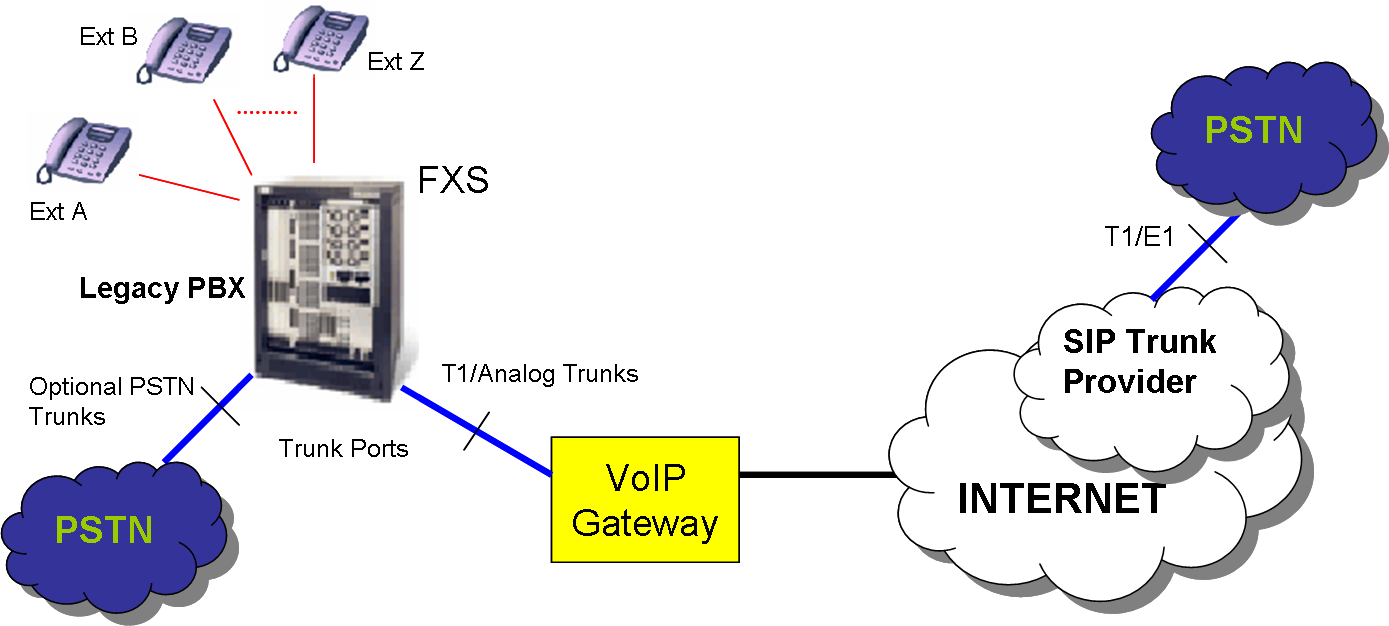Enabling legacy PBX for SIP Trunks
Why do we need SIP Trunk on a PBX?
VoIP is more efficient in providing the required number of channel than traditional POTS (Plain Old Telephone Service) and PRI (Primary Rate Interface). Whenever a company required an extra channel even when used few minutes during peak hour, it had to purchase an additional line that would not be utilized most of the time. Since channels are virtual with SIP trunks, the company now can use the number of channels needed on demand. The feature of dynamically allocation adds flexibility over traditional systems.
In addition to that, the main reason to implement SIP trunks is probably the savings it will bring to the company. It can get rid of expensive voice T1 circuits or a number of pots lines. SIP trunk providers offer much cheaper rates than conventional providers mainly because the Internet is used to deliver the calls bypassing any long distance carrier.
How does it Work?
Most of new PBXs are already capable of handling SIP trunks, however in this case we are dealing with an existing PBX that is still working fine and the company does not want to replace it yet.
It won't be required anything other than configuring the traditional Trunk on the PBX; the rest is all transparent for it. There, the call is converted to SIP and sent over the IP network to the SIP trunk provider which is in charge of terminating the call on the PSTN.
When an user wants to make an outbound call, it will be first handled by the legacy PBX that routes the call to the trunks connected to the Voip gateway also located at the company premises. This VoIP gateway will convert the analog or TDM signal to IP signal. This signal will flow over the IP network, usually the public Internet, to the SIP trunk provider's network which can route and terminate calls directed to any PSTN number. Inbound calls follow the exact opposite direction.
Implementation
As shown in the diagram, a VoIP gateway is inserted between the Internet link and the PBX. Implementing this solution is fairly simple; however, the following have to be taken into consideration:
The number of trunk channels available in the PBX and the kind of bandwidth will define the supported number of concurrent calls that can be sent thru the SIP trunk. The Voip gateway can be analog or digital, again, depending on the kind of trunk ports available in the legacy PBX. If it is analog a FXS Voip gateway will be required.
The Internet link will carry the voice calls and rest of data from the company's network therefore the required bandwidth needs to be carefully calculated and, in many cases, QOS/Voip prioritization policies need to be implemented in the company's Internet router. Please contact ABP Tech for more details on equipment needed and help configuring it.







